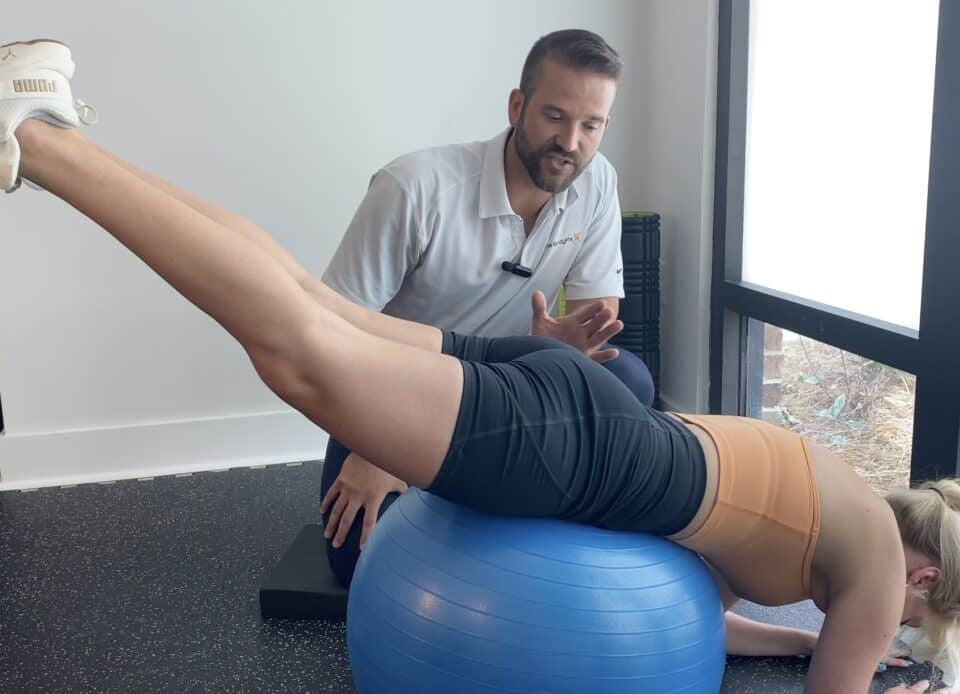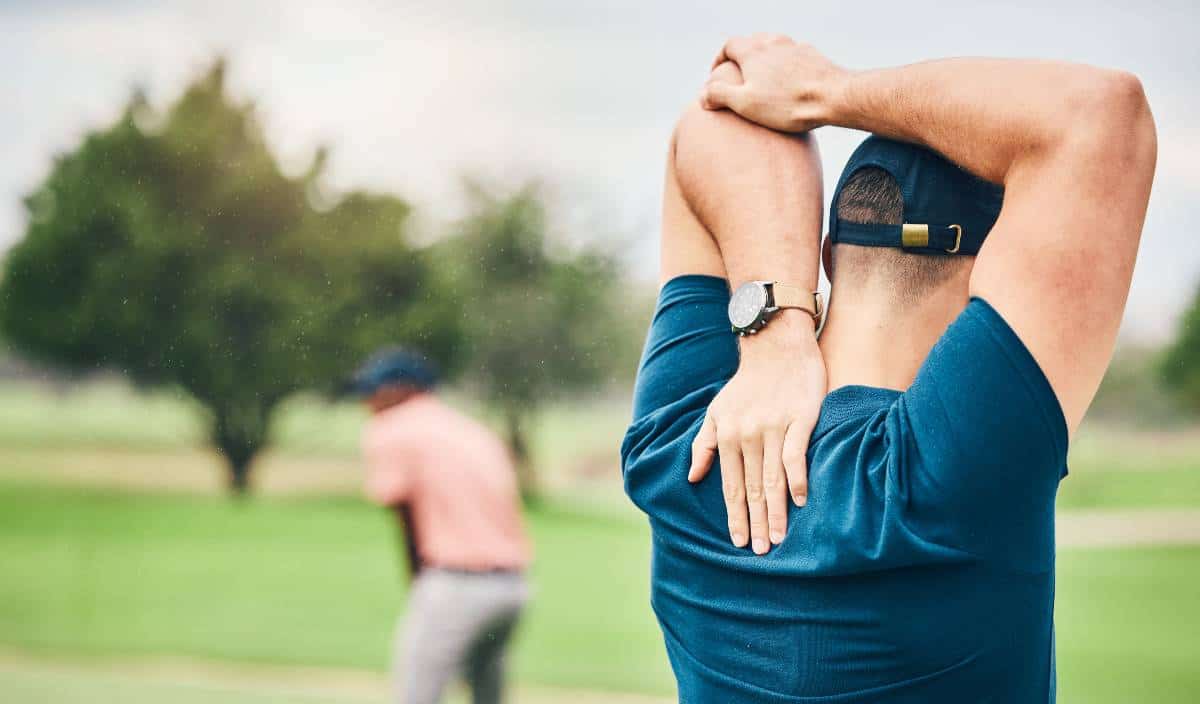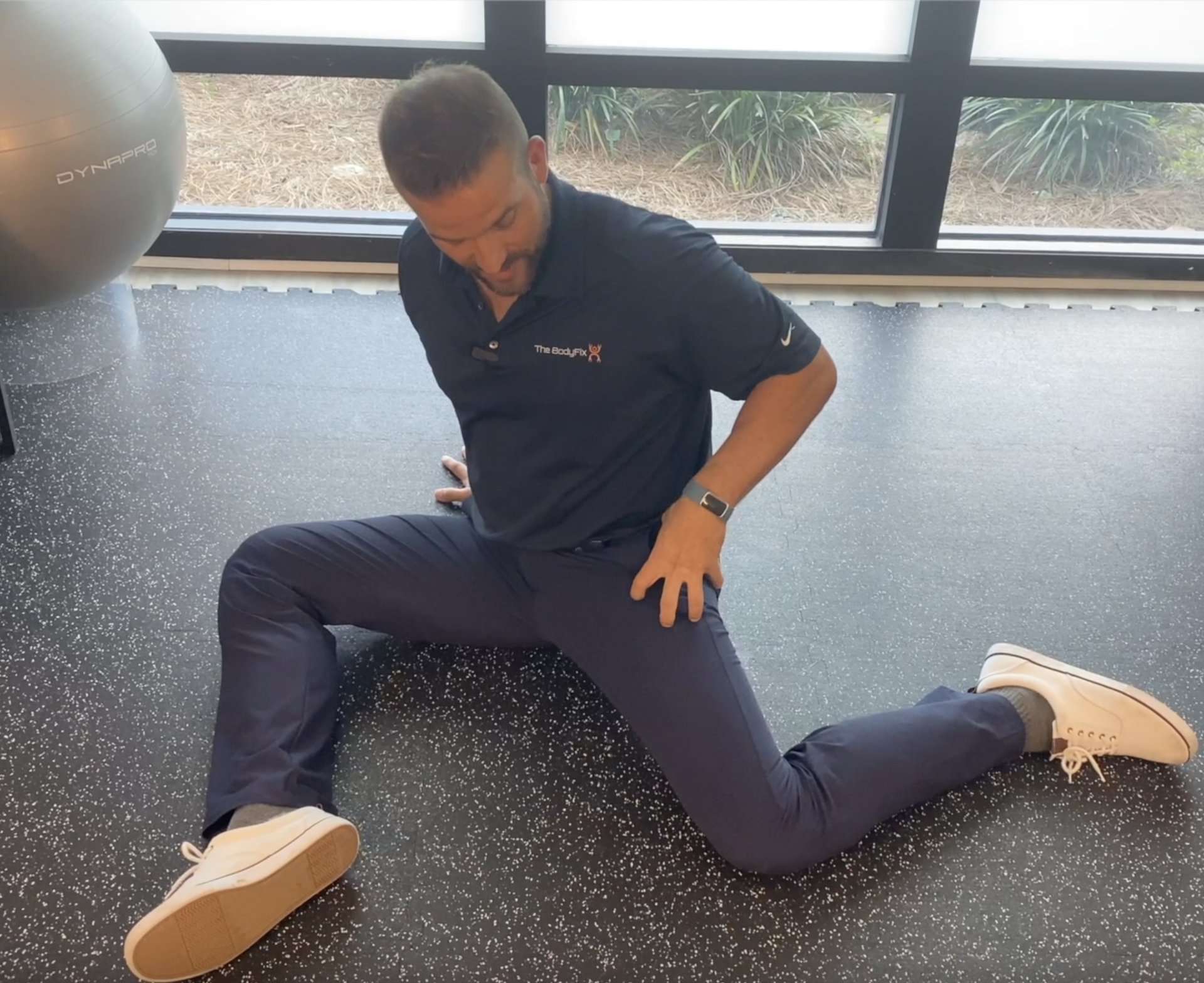Most of us are familiar with the phrase “sitting is the new smoking” because of the myriad health issues linked to prolonged sedentary behavior. One of the lesser-discussed but highly critical issues arising from our chair-bound lives is the weakening and deactivation of our gluteal muscles. This can play a significant role in the onset of low back pain. Here’s why activating and strengthening the glute muscles – primarily the gluteus maximus – is essential in preventing lower back pain:
Table of Contents
- Anatomy & Biomechanics 101
- The Connection Between Glutes and the Lumbar Spine
- My Journey to Understanding Glute Activation and Back Health
- The Chain Reaction of Inactivity
- Posture & Distribution of Force
- Glutes as Shock Absorbers
- Activation Before Strength
- The Essential Glute Activation Sequence
- What can we conclude from this
Anatomy & Biomechanics 101
The gluteus maximus is the largest muscle in the human body. It plays a pivotal role in hip extension, outward rotation, and abduction. When functioning correctly, it acts to stabilize the pelvis and supports the lumbar (lower) spine during activities that engage the lower body.
Experience the BodyFix Difference
Experience the difference that patient-centric, whole-body chiropractic care can make. Discover how The BodyFix’s unique approach addresses not just your pain, but your overall wellness for lasting results.
The Connection Between Glutes and the Lumbar Spine
Weak or inactive glutes can lead to an imbalance in our movement patterns. Other muscles, like the muscles of the lower back (lumbar paraspinal) or the opposite hip muscles (tensor fasciae latae or TFL), have to compensate for the lack of gluteal engagement. This compensation leads to overuse, strain, and eventually pain.1
My Journey to Understanding Glute Activation and Back Health
After years of treating patients with lower back pain, I’ve discovered that one of the most overlooked causes is something many of us don’t think about – our glute muscles. Let me share what I’ve learned about this crucial connection and how it might be affecting your daily life.
The Chain Reaction of Inactivity
Inactive glutes can also influence the entire kinetic chain, impacting both above and below the lumbar spine. This can lead to issues like anterior pelvic tilt (resulting from tight hip flexors and weak glutes/abs), which can exaggerate the lumbar curve, placing more strain on the lower back. Similarly, it can also contribute to knee pain because of altered mechanics during movement.2
Posture & Distribution of Force
Activated and strong glutes support an upright posture, ensuring the force from activities like walking, lifting, or running is evenly distributed and not excessively burdening the lumbar spine.
Glutes as Shock Absorbers
Think of the glutes as your body’s shock absorbers. When you jump, run, or engage in other high-impact activities, robust glute muscles can absorb some of the impact, reducing the jarring forces transmitted to the lower back.
Activation Before Strength
While it’s crucial to have strong glute muscles, it’s equally important to ensure they’re activated appropriately during activities. Even individuals with well-developed glutes can have a disconnection in activating them effectively during functional movements. Exercises like glute bridges/planks, hip extension, and bird dogs can help in “waking up” these muscles and ensuring they are recruited correctly during more complex activities.
The Essential Glute Activation Sequence
1. The Glute Bridge: Our Foundation Exercise
The glute bridge is where we always begin. This fundamental exercise creates the essential mind-muscle connection needed for proper glute activation. Here’s how I guide my patients through it:
Position yourself lying on your back with knees bent and feet flat on the floor at hip-width. Before lifting, engage your core by drawing your navel toward your spine. The key is to push through your heels rather than the balls of your feet as you lift your hips toward the ceiling. At the top, focus on maximum glute contraction while maintaining a straight line from shoulders to knees.
The most common error I see is arching the lower back. If you feel this exercise in your lower back, slightly lower your hips and focus more on glute engagement.
2. Bird Dog: Core-Glute Integration
This exercise effectively combines core stability with glute activation. Start in a tabletop position with hands under shoulders and knees under hips. Extend the opposite arm and leg while maintaining a stable spine. The key is keeping your back flat – imagine balancing a cup of water on your lower back.
3. Clamshells: Targeting Hip Stability
The clamshell specifically targets the gluteus medius, which is crucial for hip and pelvic stability. Lie on your side with your knees bent at 90 degrees, keeping your hips stacked vertically. Maintain foot contact while lifting the top knee, focusing on rotating from the hip joint rather than the lower back.3
What can we conclude from this
Our bodies operate as interconnected systems, with each part playing a role in overall function and health. The glutes, being our primary mover and stabilizer for many activities, hold a crucial position in this system. If they’re not working optimally, other parts, like the lower back, bear the brunt of the additional stress. By focusing on both the strength and activation of our lower back glute muscles, we can ensure a robust and resilient lumbar spine, keeping low back pain or glute pain at bay.4
Based on current research and clinical observations, I recommend performing these exercises 3-4 times per week. Start with the basic glute bridge and clamshell to establish proper activation patterns before progressing to more challenging movements.
For more detailed guidance or to ensure proper form, we welcome you to book a consultation with us at The BodyFix.
*Dr. Mario has great recommendations for strengthening parts of the body & Relieving Pain At Home!
Check out our Youtube Channel & Try out the Hip Extension Exercise & Glute Plank Exercise to Relieve & Prevent Low Back Pain!
https://www.youtube.com/watch?v=id_53yoiF4Mhttps://www.youtube.com/watch?v=pz-bFIV3_dM
Find out more information from our experts at The BodyFix. Or Book an Appointment with us today to start your healing journey! For more information, you can call us at 843-981-4500.
Follow & Subscribe to @TheBodyFixChiro Youtube Channel to see more.
- https://pubmed.ncbi.nlm.nih.gov/37507116/ ↩︎
- https://pmc.ncbi.nlm.nih.gov/articles/PMC4713798/ ↩︎
- https://uhs.princeton.edu/sites/g/files/toruqf5356/files/documents/Pelvic-Stabilization-Hip-Strengthening.pdf ↩︎
- https://www.niams.nih.gov/health-topics/educational-resources/health-lesson-learning-about-muscles ↩︎
Blog Disclaimer: The information provided on The BodyFix Chiro blog is for general informational and educational purposes only and is not intended as medical advice. These articles reflect our opinions and experiences but should not be used to diagnose or treat any health conditions. Always consult with your physician, chiropractor, or other qualified healthcare provider before starting any new treatment, exercise program, or making changes to your health routine. Any actions you take based on information from this blog are entirely at your own risk, and The BodyFix Chiro and its contributors disclaim any liability for the decisions you make based on this information.




